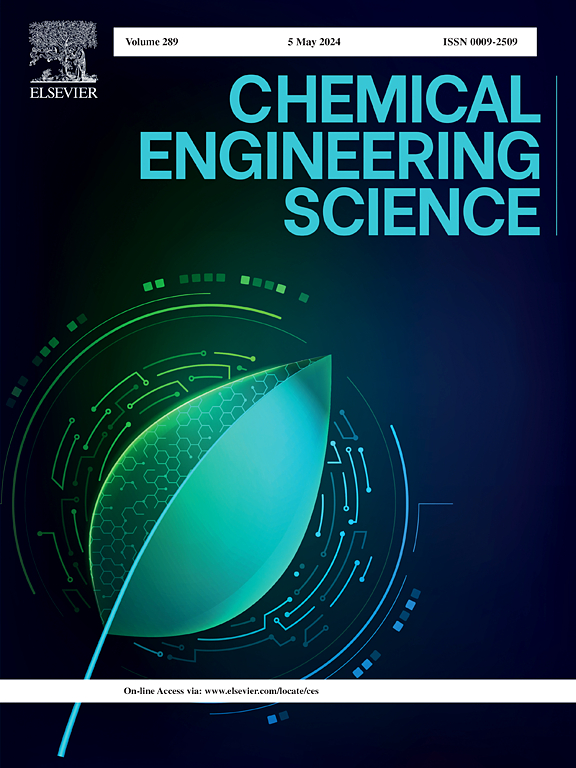Development of a machine learning-based symbolic regression model for mixing time in large petroleum storage tanks
IF 4.1
2区 工程技术
Q2 ENGINEERING, CHEMICAL
引用次数: 0
Abstract
This study investigates the use of Symbolic Regression, a machine learning technique, to develop a model for mixing time in large petroleum storage tanks stirred by side-entry impellers. Studies involving the mixing time for side-entry mixers are relatively scarce when compared to research on mixing time models for top-mounted impellers. This limited availability of predictive models for side-entry configurations highlights the relevance of this study and makes them an excellent case for applying Symbolic Regression in stirred tank modeling. Symbolic Regression was applied to mixing time data obtained for a large petroleum storage vessel. The study examines how key parameters, including oil viscosity, tank diameter, tank height, impeller inclination angle, and the number of impellers affect the mixing time in these large tanks. The data used for model development was generated via CFD simulations, with mixing time estimated through numerical analysis. To ensure reliable CFD results, a Grid Convergence Index (GCI) study was conducted, maintaining the GCI for the average fluid velocity within the tank below 5%. In addition, this work introduces advanced statistical tools for predictive modeling, which can be valuable not only for estimating mixing time but also for broader applications in fluid dynamics. The analysis includes Spearman rank correlation, analysis of variance (ANOVA), and Symbolic Regression. The proposed mixing time equation was developed using machine learning techniques trained on the CFD-generated data. The results indicate that the number of impellers, tank diameter, and tank height have the most significant impact. In contrast, within the investigated parameters range, oil viscosity and impeller inclination angle have a comparatively smaller statistical influence on the mixing time.基于机器学习的大型石油储罐混合时间符号回归模型的开发
本研究调查了符号回归(一种机器学习技术)的使用,以开发由侧入式叶轮搅拌的大型石油储罐混合时间的模型。与顶置叶轮混合时间模型的研究相比,侧入混合器混合时间的研究相对较少。侧入口配置的预测模型的有限可用性突出了本研究的相关性,并使它们成为在搅拌槽建模中应用符号回归的极好案例。对某大型储油船混合时间数据进行了符号回归分析。研究了油品粘度、油罐直径、油罐高度、叶轮倾角、叶轮数量等关键参数对大型油罐内混合时间的影响。用于模型开发的数据是通过CFD模拟生成的,混合时间是通过数值分析估计的。为了确保可靠的CFD结果,进行了网格收敛指数(GCI)研究,将罐内平均流体速度的GCI保持在5%以下。此外,这项工作还引入了用于预测建模的先进统计工具,这些工具不仅对估计混合时间有价值,而且在流体动力学中有更广泛的应用。分析包括Spearman秩相关、方差分析(ANOVA)和符号回归。提出的混合时间方程是使用cfd生成数据训练的机器学习技术开发的。结果表明,叶轮数、槽直径和槽高度对其影响最为显著。相比之下,在所研究的参数范围内,油粘度和叶轮倾角对混合时间的统计影响较小。
本文章由计算机程序翻译,如有差异,请以英文原文为准。
求助全文
约1分钟内获得全文
求助全文
来源期刊

Chemical Engineering Science
工程技术-工程:化工
CiteScore
7.50
自引率
8.50%
发文量
1025
审稿时长
50 days
期刊介绍:
Chemical engineering enables the transformation of natural resources and energy into useful products for society. It draws on and applies natural sciences, mathematics and economics, and has developed fundamental engineering science that underpins the discipline.
Chemical Engineering Science (CES) has been publishing papers on the fundamentals of chemical engineering since 1951. CES is the platform where the most significant advances in the discipline have ever since been published. Chemical Engineering Science has accompanied and sustained chemical engineering through its development into the vibrant and broad scientific discipline it is today.
 求助内容:
求助内容: 应助结果提醒方式:
应助结果提醒方式:


